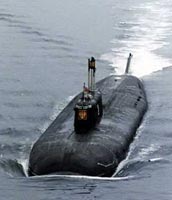 The Russian Oscar-II class nuclear-powered cruise missile submarine Kursk sank ten years ago yesterday with a loss of all aboard. One hundred and sixteen crew members and two weapons experts died in what is believed to have been the explosion of a faulty torpedo. At 154m long and four stories high, the Kursk was the largest attack submarine ever built.
The Russian Oscar-II class nuclear-powered cruise missile submarine Kursk sank ten years ago yesterday with a loss of all aboard. One hundred and sixteen crew members and two weapons experts died in what is believed to have been the explosion of a faulty torpedo. At 154m long and four stories high, the Kursk was the largest attack submarine ever built.
10 years after Kursk sinking, questions remain
The tragedy began on a Saturday morning, when seismologists recorded two underwater explosions in the Barents Sea northeast of Murmansk. Search operations for the K-141 Kursk, one of the most modern vessels in the Russian navy, were not launched until 12 hours later.
Russian rescue efforts then failed because of unsuitable equipment.
For “reasons of secrecy,” Russian leaders said nothing about the sinking until two days later. They also kept relatives of the crewmembers in the dark and even reported at first that the sailors were well.
Fearing espionage, Russia initially rejected offers of foreign help. Days passed before it accepted assistance from Norway and Britain. The wreck and the bodies of the crew members were discovered at a depth of 110 meters.
Engraved on the granite monument are the words: “Don’t despair.” They were part of a note scrawled by Lt. Capt. Dmitry Kolesnikov while trapped in one of the sunken submarine’s compartments.
